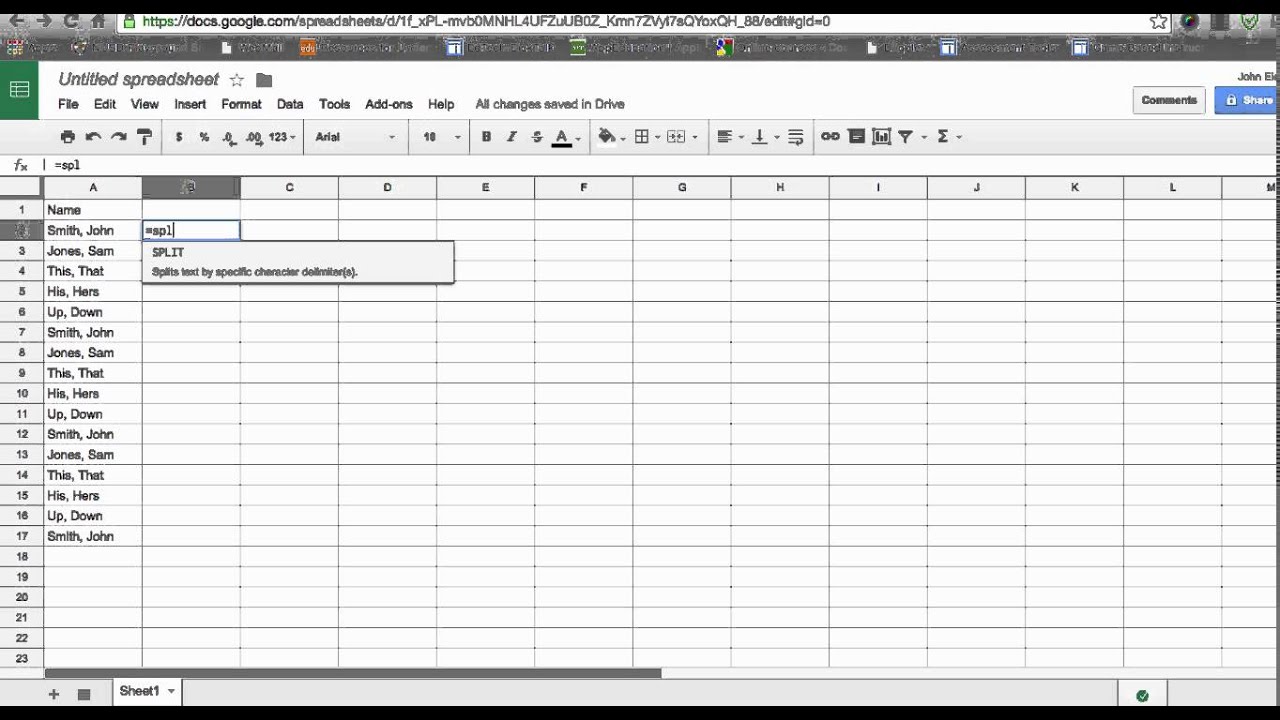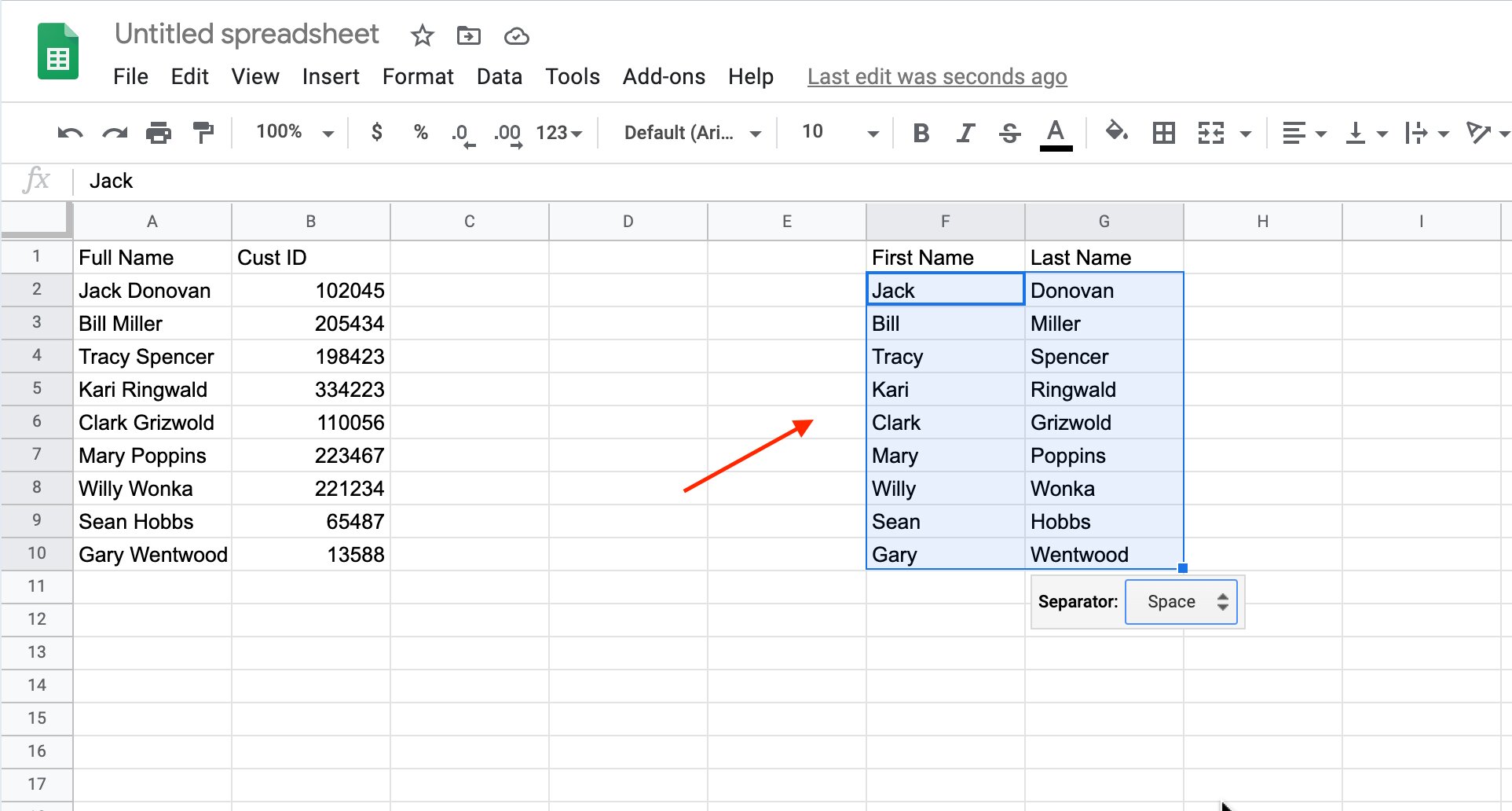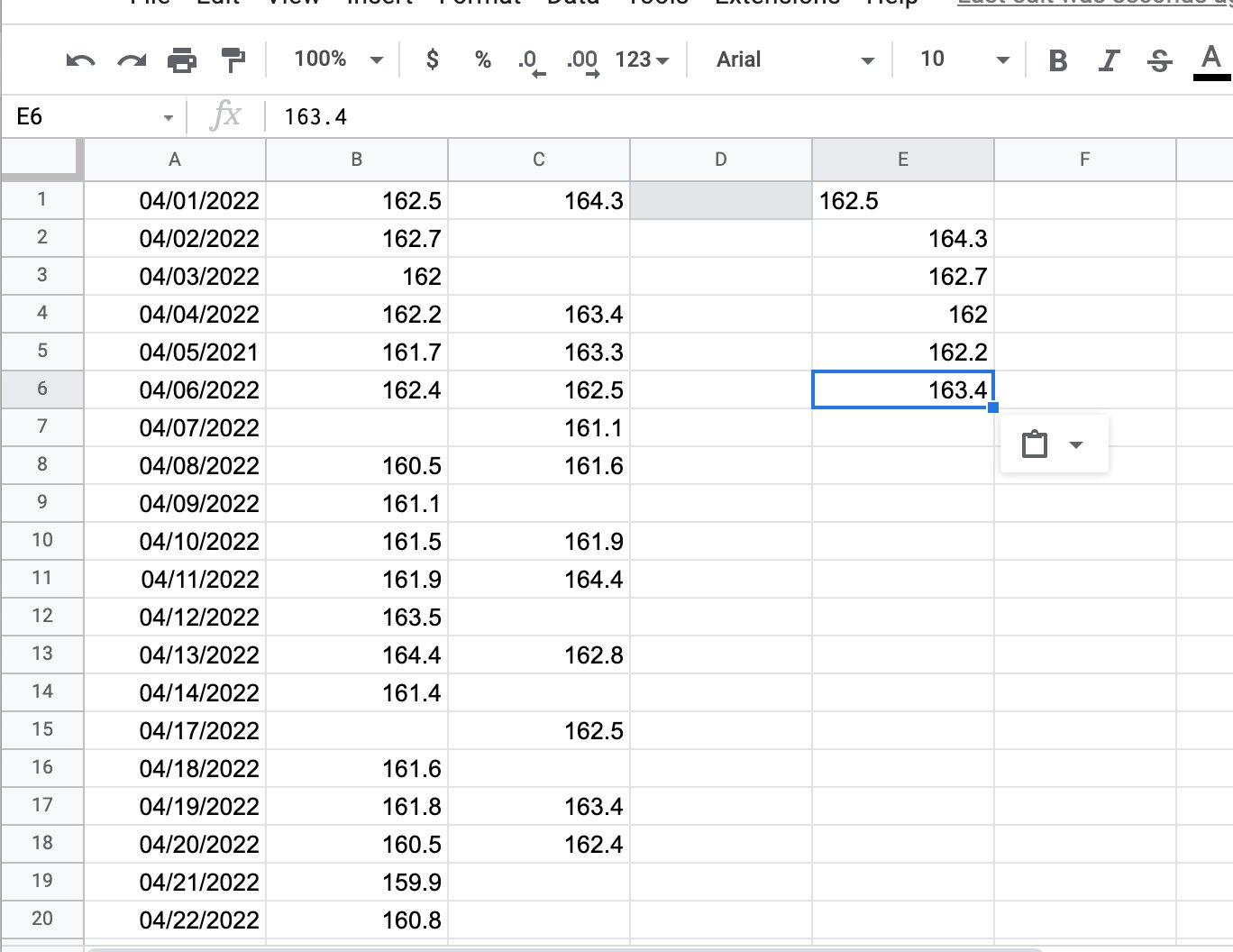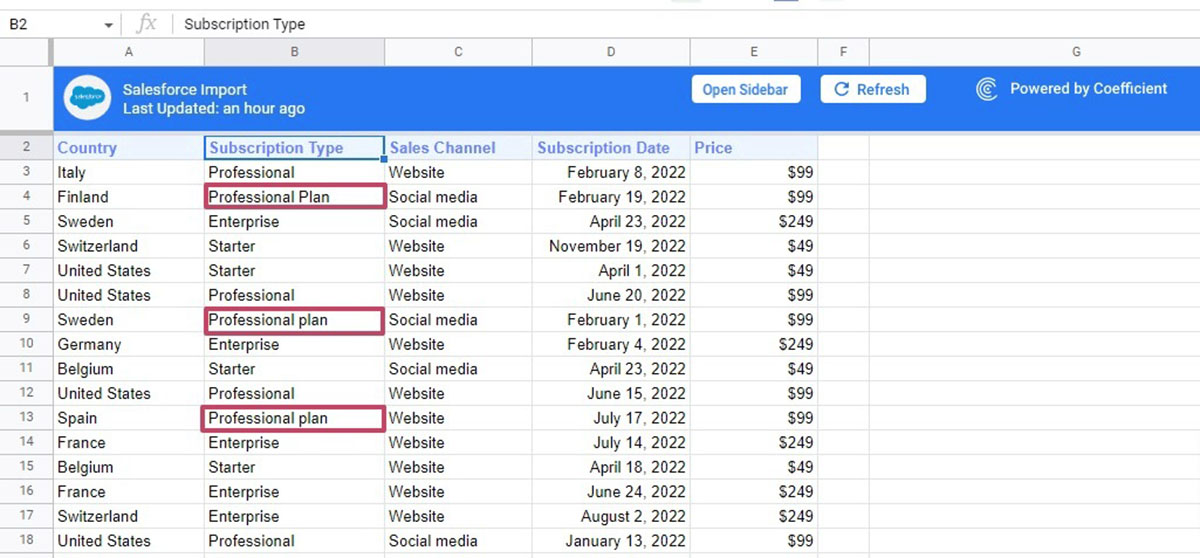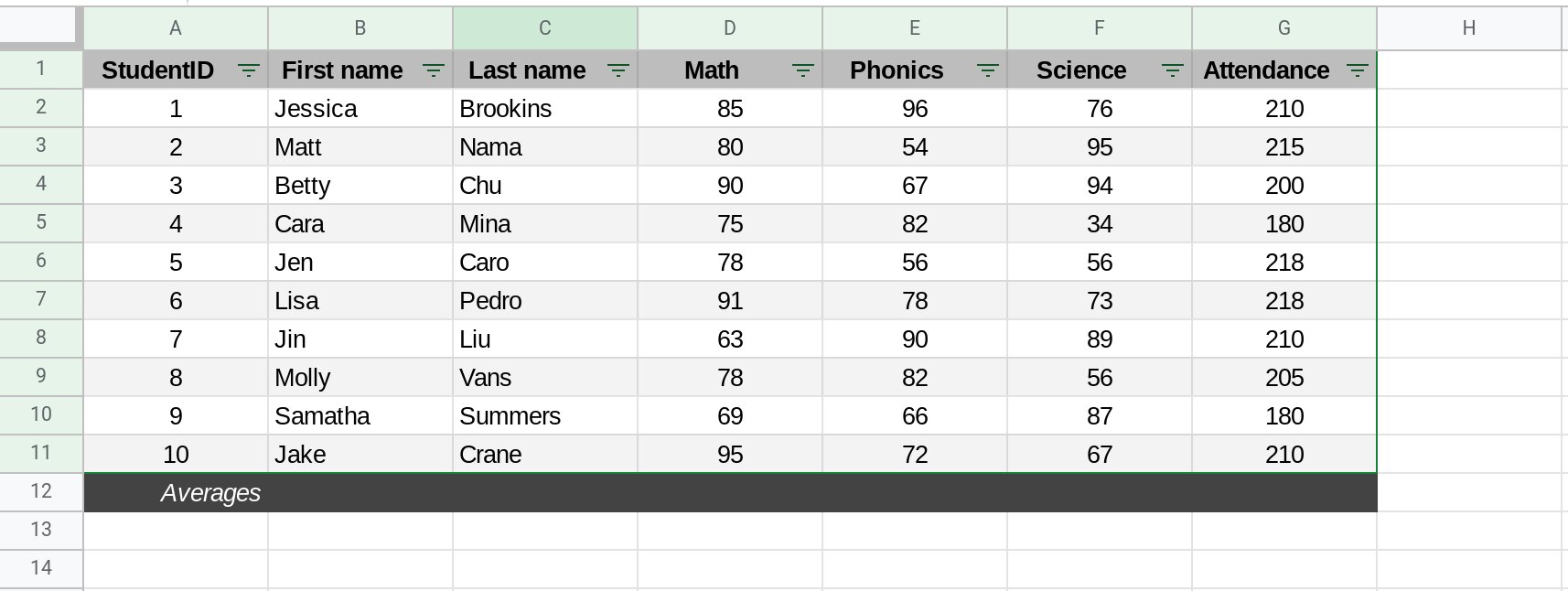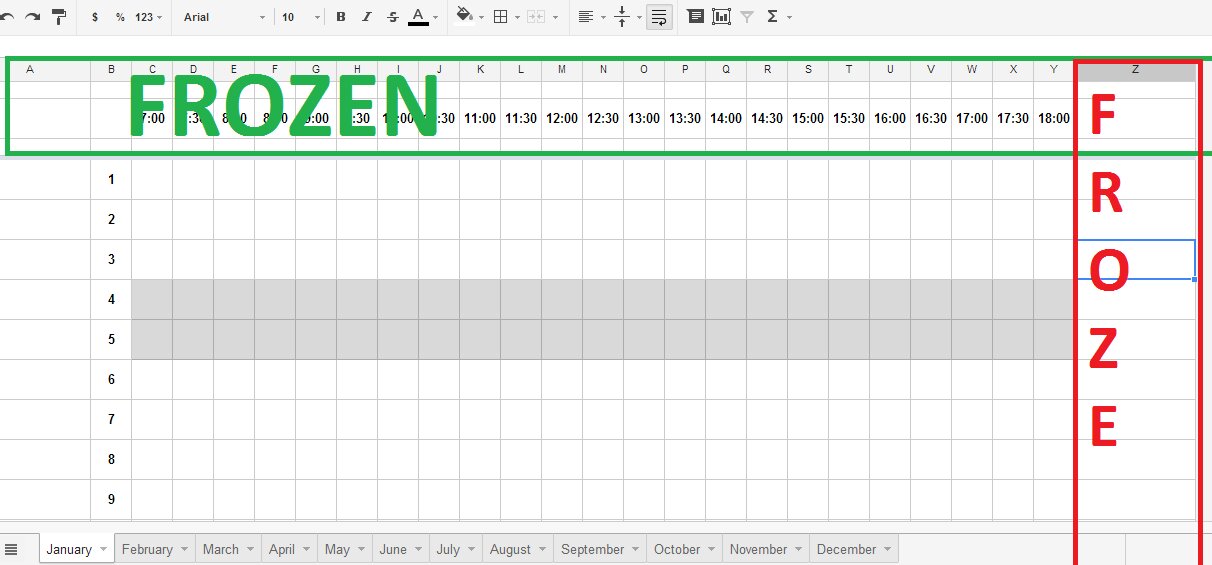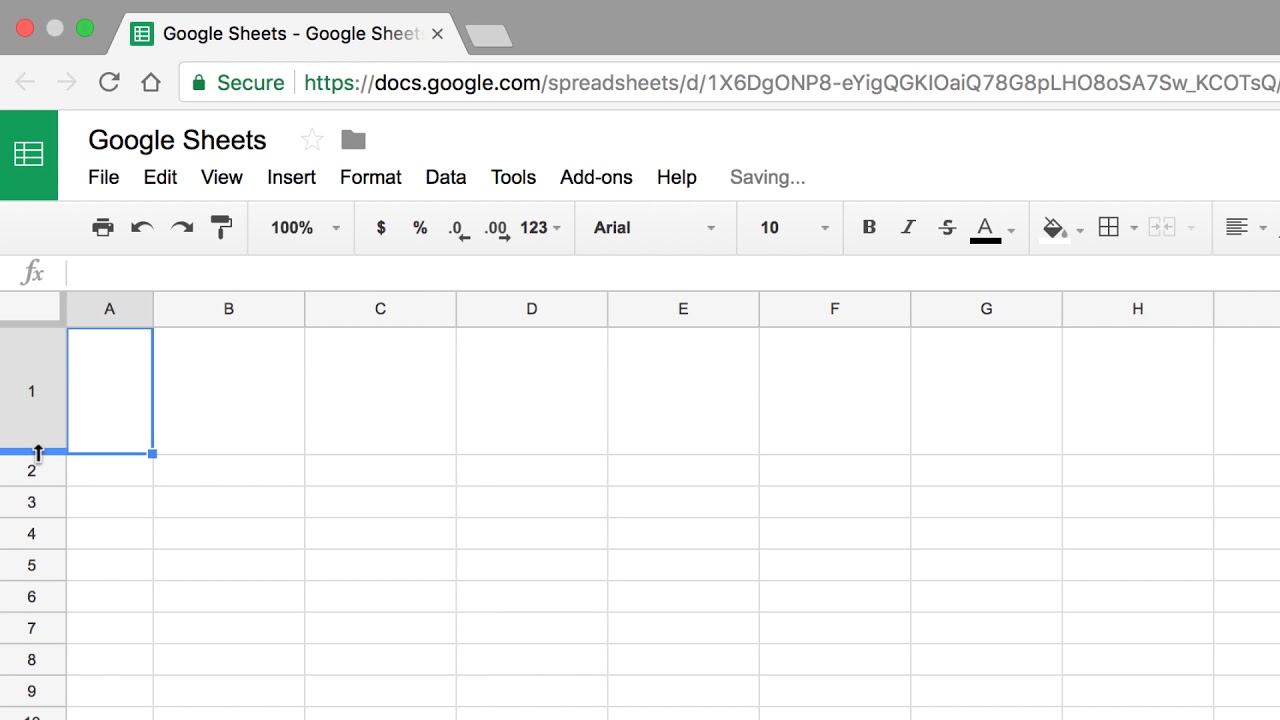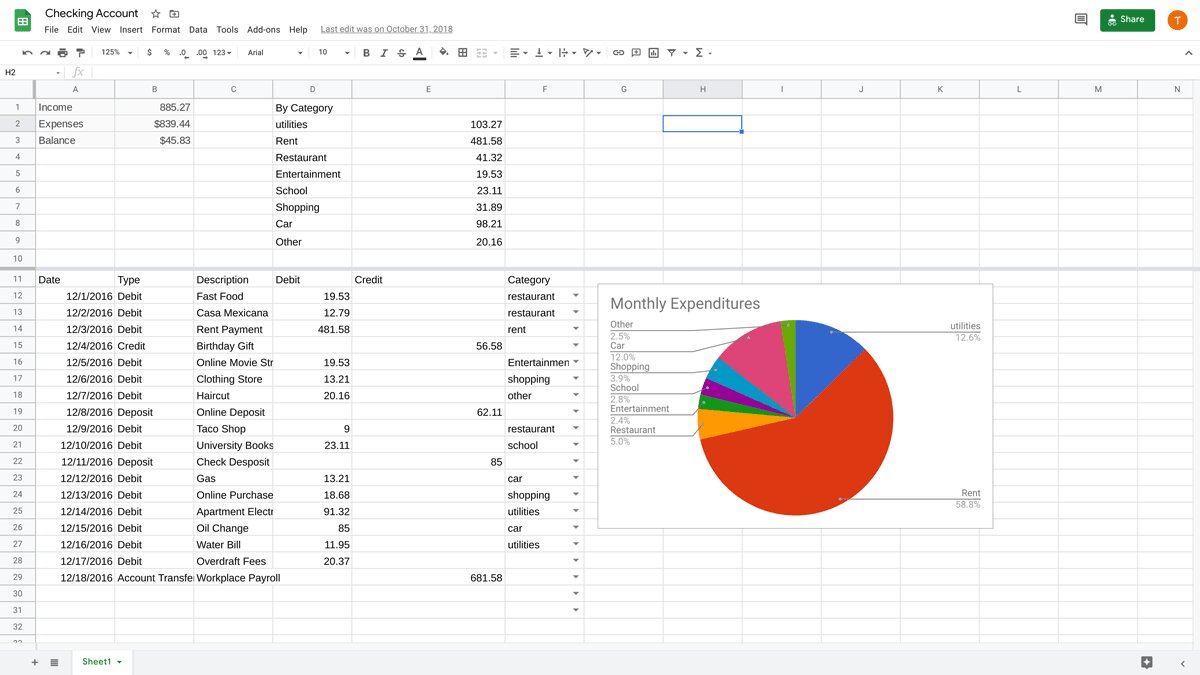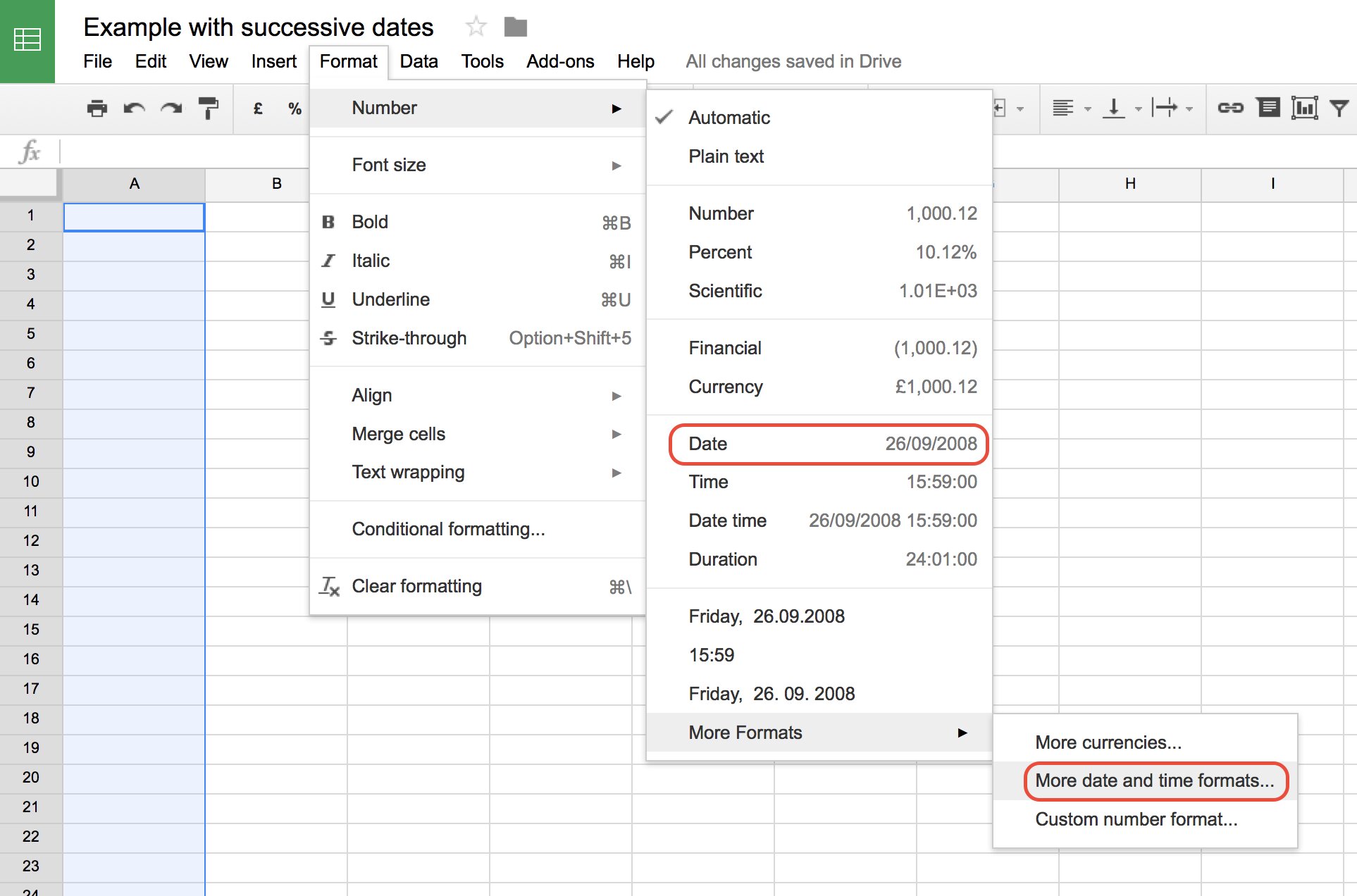Introduction
When working with large datasets in Google Sheets, it is often necessary to split data from one column into multiple columns. This can be useful in various scenarios such as separating full names into first and last names, splitting addresses into street, city, and zip code, or extracting specific information from a text string.
Google Sheets provides several methods to split a column, each with its own advantages. In this article, we will explore four different methods you can use to split a column in Google Sheets. Whether you’re a beginner or an experienced Sheets user, you will find a method that suits your needs.
By mastering the art of splitting columns, you can save time and effort by eliminating the need for manual data manipulation. This will enable you to organize your data more effectively, increase productivity, and gain valuable insights from your spreadsheet.
If you’re ready to enhance your data analysis skills and streamline your workflow, let’s dive into the various methods available for splitting columns in Google Sheets.
Method 1: Using the Split Text to Columns feature
One of the simplest ways to split a column in Google Sheets is by utilizing the built-in Split Text to Columns feature. This feature allows you to divide the contents of a single cell into separate columns based on a specified delimiter.
To use this method, follow these steps:
- Select the column you want to split by clicking on the column header.
- Go to the Data menu and select Split text to columns. A dialog box will appear.
- In the dialog box, choose your desired delimiter or select Custom if your data has a unique separator. You can use characters like commas, spaces, tabs, or even a specific value.
- Preview the split in the box beneath the delimiter selection.
- Click Split to divide the column into separate columns based on the chosen delimiter.
This method is ideal when you have a consistent delimiter separating your data. For example, if you have a column containing full names separated by commas, you can easily split the names into distinct first and last name columns using the comma as the delimiter.
This feature also supports the option to split into rows instead of columns by selecting Transpose in the dialog box. This can be useful when you need to divide the data vertically instead of horizontally.
Remember, with the Split Text to Columns feature, you can quickly break down your data into separate columns without the need for complex formulas or scripts. It’s a great starting point for basic data splitting needs.
Method 2: Using the Text to Columns add-on
If you’re looking for more advanced splitting capabilities in Google Sheets, the Text to Columns add-on is a powerful tool that can save you time and effort. This add-on provides additional features and flexibility compared to the built-in Split Text to Columns feature.
To utilize the Text to Columns add-on, follow these steps:
- Click on Add-ons in the menu bar and select Get add-ons.
- In the add-ons store, search for Text to Columns and click on the Free button to install the add-on.
- Once the add-on is installed, it will appear in the Add-ons menu. Click on it to open the add-on sidebar.
- Select the column you want to split by clicking on the column header.
- In the Text to Columns sidebar, specify the delimiter or choose Auto Detect if you want the add-on to automatically detect the delimiter.
- Choose the split option that suits your needs, such as splitting into new columns or overwriting the existing data.
- Preview the split in the sidebar and adjust any settings if needed.
- Click on Split to divide the column into separate columns based on the chosen settings.
With the Text to Columns add-on, you have more control over the splitting process. You can choose from a variety of delimiters, such as commas, spaces, tabs, or even custom characters. The add-on also offers options to remove leading or trailing spaces, convert text to lowercase, and more.
Whether you’re dealing with complex data or require specific splitting preferences, the Text to Columns add-on is a valuable tool in your Google Sheets arsenal. It simplifies the process of splitting columns and provides you with comprehensive options to handle various data scenarios.
Method 3: Using a formula
If you prefer a more hands-on approach and want to customize the splitting process in Google Sheets, using a formula is a great option. By writing a formula, you can split the contents of a column based on specific criteria or conditions.
Here is how you can split a column using a formula:
- Select the column where you want to split the data.
- In an adjacent column, enter the formula for splitting the data.
- Use functions like SPLIT, LEFT, MID, RIGHT, or a combination of these functions, depending on your splitting requirements.
- Specify the delimiter or criteria based on which you want to split the data.
- Drag the formula down to apply it to all the cells in the new column.
For example, if you have a column containing full names and you want to split them into separate columns for first and last names, you can use the following formula:
=SPLIT(A1, " ")This formula uses the space character as the delimiter and splits the full name in cell A1 into two separate columns.
By using formulas, you have the flexibility to customize your splitting process and apply specific rules or conditions. This method is particularly useful when dealing with complex data structures or if you need to split data based on certain pattern matching.
While this method requires a bit more manual input compared to the previous methods, it offers you finer control over the splitting process and allows for greater customization based on your specific data requirements.
Method 4: Using a script
If none of the previous methods meet your needs or if you want to automate the splitting process in Google Sheets, using a script is the way to go. Scripts allow you to create custom functions or macros that perform specific actions, such as splitting a column.
To use a script for splitting a column, follow these steps:
- Click on Extensions in the menu bar and select Apps Script. The Apps Script editor will open in a new tab.
- In the editor, delete the existing default code in the Code.gs file.
- Write a custom script function or use a pre-existing script that splits the column based on your desired criteria.
- Save the script and give it a meaningful name.
- Close the Apps Script editor tab and go back to your Google Sheet.
- In the Google Sheet, go to the Extensions menu and select your custom script function to run it.
Using a script gives you the ultimate flexibility and control over the splitting process. You can create complex rules and conditions, interact with external data sources, and automate the splitting process for larger datasets.
Google Apps Script, which is based on JavaScript, provides a powerful scripting environment that can be used to develop custom solutions for Google Sheets. There is a vast library of existing scripts available to help you get started, or you can write your own from scratch.
While using a script may require some basic coding knowledge, it can greatly simplify and streamline your data splitting process, especially when dealing with large and complex datasets.
Conclusion
Splitting columns in Google Sheets is a necessary skill when dealing with large datasets or manipulating data for analysis. By using the various methods discussed in this article, you can efficiently split columns and organize your data in a way that best suits your needs.
Starting with the built-in Split Text to Columns feature, you have a simple and quick solution to separate data based on a specified delimiter. This method works well for basic splitting needs and requires no additional add-ons or coding knowledge.
If you require more advanced splitting capabilities, the Text to Columns add-on provides additional features and flexibility. It allows you to handle complex data scenarios, such as auto-detecting delimiters and converting text to lowercase.
For those who prefer a more hands-on approach and want to customize the splitting process, using formulas gives you the ability to split columns based on specific criteria or conditions. This method offers greater control and can be useful for complex data structures or pattern matching.
Lastly, using scripts takes the splitting process to the next level by providing automation and the option to develop custom solutions. Although this method requires some coding knowledge, it allows for sophisticated rules and the handling of large datasets.
By mastering these methods, you can save time, increase productivity, and ultimately gain valuable insights from your data. Experiment with different methods and find the one that best meets your requirements. With practice, splitting columns in Google Sheets will become a seamless part of your data analysis workflow.







